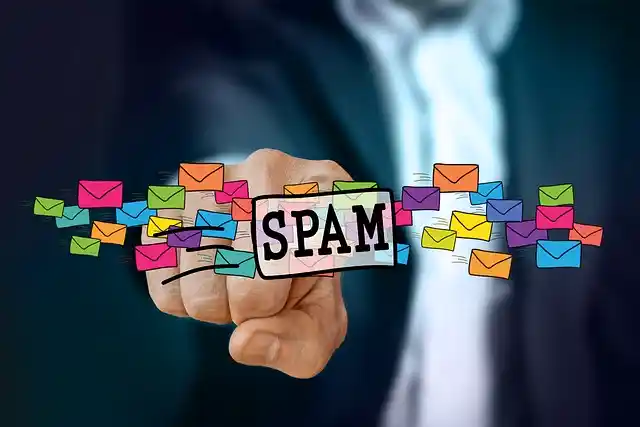In today’s hyper-connected world, the internet is an indispensable part of our lives. Our digital activities have become deeply integrated into our daily routines, from emails to social media, online shopping, and streaming services. However, alongside the benefits of this digital age comes the pervasive problem of spam. Spam, the unsolicited and often irrelevant messages that flood our inboxes and clutter our digital spaces, has become one of the most annoying and persistent issues facing internet users today.
What is Spam?
Spam refers to any unwanted, irrelevant, or inappropriate messages sent over the Internet, typically to numerous users, for the purpose of advertising, phishing, spreading malware, or simply to annoy. The most common form of spam is email spam, which can be unsolicited text messages, social media posts, or even comments on blogs and forums.
Spam is often created and distributed by automated bots that send millions of messages simultaneously, hoping that even a small percentage of recipients will engage with the content. While some spam is relatively harmless—such as unwanted advertisements—other forms can be malicious, aiming to steal personal information or spread harmful software.
The Evolution of Spam
The concept of spam dates back to the early days of the internet. The first known instance of spam occurred in 1978 when a marketer sent an unsolicited email to 400 users on ARPANET, the precursor to the modern internet. Since then, spam has evolved in scale and sophistication, becoming a global issue affecting nearly every internet user.
In the early 2000s, spam was predominantly associated with email, with users receiving countless unsolicited advertisements for products ranging from pharmaceuticals to dubious investment opportunities. Over time, spammers have adapted to the changing digital landscape, exploiting new platforms and technologies to reach their targets. Today, spam can be found in email and social media platforms, messaging apps, and even search engine results.
The Impact of Spam
Spam is more than just an annoyance; it can have significant consequences for individuals and businesses.
- Time and Productivity: Spam can be a major time-waster for individuals. Sorting through unwanted messages, deleting spam, and identifying legitimate communications in a cluttered inbox can be frustrating and time-consuming. For businesses, spam can lead to lost productivity as employees spend valuable time managing and filtering out unwanted emails.
- Security Risks: Spam is often used as a vehicle for more serious cyber threats. Phishing emails, designed to trick recipients into providing sensitive information such as passwords or credit card numbers, are a common form of spam. Additionally, spam emails can contain malicious links or attachments that, when clicked or opened, can infect a user’s device with malware, leading to data breaches, financial loss, and compromised security.
- Financial Costs: For businesses, spam can result in significant financial costs. While necessary, spam filters and anti-spam software can be expensive to implement and maintain. Additionally, if a business falls victim to a spam-related security breach, the costs associated with data recovery, legal fees, and damage control can be substantial.
- Reputation Damage: For businesses, being associated with spam—whether as a recipient or a sender—can damage their reputation. If customers or clients receive spam from a business, it can lead to a loss of trust and credibility. Moreover, businesses that engage in sending spam risk being blacklisted by email providers, making it difficult for legitimate communications to reach their intended recipients.
Combating Spam: Best Practices
While it is nearly impossible to eliminate spam, there are several strategies that individuals and businesses can employ to reduce its impact:
- Use Spam Filters: Most email providers offer built-in filters that automatically detect and divert spam emails from your inbox. These filters are generally effective but may require occasional fine-tuning to ensure that legitimate emails are not mistakenly marked as spam.
- Be Cautious with Personal Information: Be mindful of where and how you share your email address and other personal information online. Avoid posting your email address publicly on websites or social media, and be wary of sharing it with unfamiliar or untrusted sources.
- Don’t Engage with Spam: One of the simplest ways to reduce spam is to avoid engaging with it. Never reply to spam emails, click on links, or download attachments from unknown senders. Engaging with spam can signal to spammers that your email address is active, potentially leading to more spam.
- Unsubscribe Wisely: If you receive unwanted emails from legitimate businesses, use the unsubscribe link typically found at the bottom of the email. However, be cautious, as spam emails may include fake unsubscribe links designed to harvest your information.
- Educate Yourself and Employees: For businesses, educating employees about the dangers of spam and how to recognise it can significantly reduce the risk of falling victim to phishing attacks or malware. Regular training sessions on cybersecurity best practices can help keep your workforce vigilant and informed.
- Invest in Anti-Spam Software: Businesses, in particular, should consider investing in robust anti-spam software that offers advanced filtering capabilities, real-time threat detection, and protection against phishing and malware attacks. This software can help keep your email system secure and reduce the spam that reaches your inbox.
Conclusion
Spam is an inevitable part of the digital experience, but it doesn’t have to be a major burden. By understanding the nature of spam, recognising its potential risks, and adopting best practices for managing and mitigating its impact, individuals and businesses can protect themselves from the most harmful effects of this digital nuisance. While the fight against spam is ongoing, staying informed and vigilant is the key to maintaining a safer and more productive online environment.




